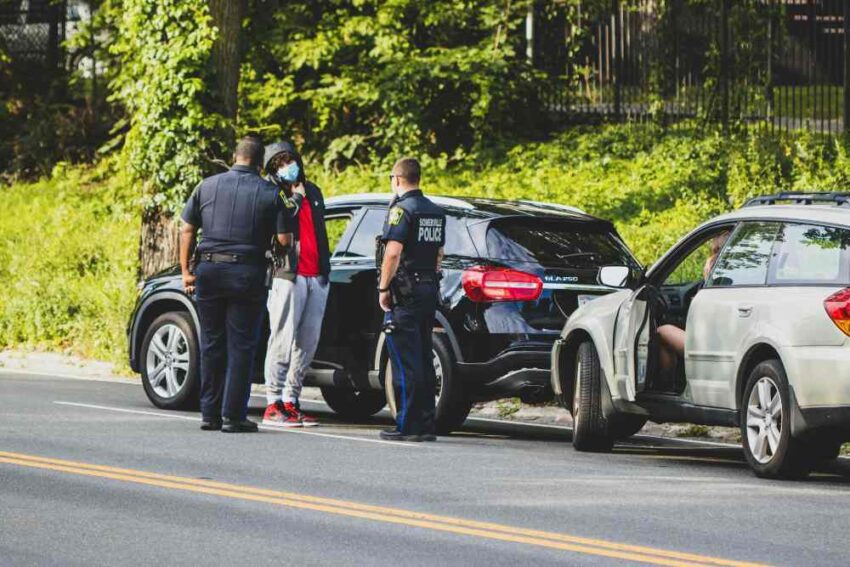Rear-end collisions, though common, can catch us off guard and leave a trail of consequences in their wake. Whether it’s a minor fender-bender or a more severe impact, knowing the right steps to take after a rear-end collision is crucial.
From ensuring immediate safety to addressing potential long-term effects, these steps can make a significant difference in navigating the aftermath of such an incident. In this article, we’ll explore six essential steps to take after a rear-end collision, guiding you through the process of safeguarding your well-being and protecting your interests.
1. Document the Scene:
After a rear-end collision, it’s crucial to document the scene thoroughly. Use your phone or camera to take clear photographs of the accident site from various angles. Capture images that showcase the positioning of the vehicles involved, any visible damage sustained, and the surrounding area. Pay attention to relevant road signs or signals, as these can provide context for the circumstances of the collision.
Additionally, note the date, time, and weather conditions at the time of the accident. This comprehensive documentation serves as valuable evidence during insurance claims or potential legal proceedings, helping to establish the conditions and facts surrounding the collision.
2. Contact Law Enforcement:
Regardless of the severity of the collision, it is advisable to contact law enforcement in many jurisdictions. The presence of law enforcement officers can facilitate an objective assessment of the situation. When they arrive, cooperate fully and provide accurate information about the incident.
Responding officers will compile a police report, a crucial document for insurance claims and potential legal proceedings. Be sure to obtain the names and badge numbers of the officers at the scene and request a copy of the police report for your records. This report can provide an official account of the incident, aiding in the resolution process.
3. Seek Medical Attention:
Even if injuries appear minor initially, seeking prompt medical attention is essential. Some injuries, such as those related to whiplash, may not manifest immediately. A medical examination not only ensures that any injuries are documented but also enables prompt treatment to prevent complications. Follow through with any recommended medical evaluations and treatments.
Keep detailed records of all medical appointments, including the names of healthcare professionals, diagnostic tests performed, and prescribed medications. This documentation not only contributes to your well-being but also serves as crucial evidence if you need to pursue a personal injury claim.
4. Consult with an Attorney if Needed:
If disputes arise over fault, injuries are severe, or you encounter challenges in the claims process, it may be wise to consult with personal injury lawyers. An experienced attorney can provide valuable guidance on your rights and legal options. They can negotiate with insurance companies on your behalf, ensuring you receive fair compensation for damages.
In cases where legal action becomes necessary, a car accident lawyer can represent your interests, navigating the complexities of the legal system. Their expertise is particularly crucial when dealing with complex liability issues or disputes regarding the extent of injuries and damages. Consulting with an attorney early in the process ensures that you have the necessary support and representation to protect your interests.
5. Notify Your Insurance Company:
Contact your insurance company as soon as possible after a rear-end collision. Provide them with accurate and detailed information about the incident, including the names and contact details of the other party involved. Be cautious about admitting fault, as the full details of the collision may not be immediately apparent.
Your insurance company will guide you through the claims process, including gathering information, assessing damages, and arranging vehicle repairs. Keeping open communication with your insurer is essential for a smooth claims process and ensuring that your rights are protected.
6. Preserve Witness Statements and Contact Information:
If there were witnesses to the rear-end collision, it’s essential to gather their statements and contact information. Approach witnesses courteously and ask if they would be willing to provide an account of what they observed. Their statements can serve as valuable corroborating evidence in insurance claims or legal proceedings.
Be sure to collect their names, phone numbers, and any other relevant contact details. In the event of a dispute over fault or conflicting accounts of the incident, witness statements can play a pivotal role in establishing the sequence of events and supporting your version of the collision.
Conclusion
In the aftermath of a rear-end collision, the steps you take can influence the outcome significantly. From the initial moments of ensuring safety to the subsequent stages of documentation, communication, and seeking professional guidance, each step plays a vital role in mitigating the impact of the incident.
Remember, your well-being and the preservation of crucial information are paramount. By following the six steps outlined in this guide, you empower yourself to navigate the aftermath of a rear-end collision with confidence, ensuring that both your immediate and long-term needs are addressed appropriately.

